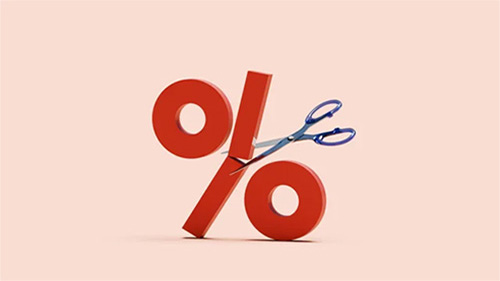What a Small Interest Rate Drop Means for You?

Even a 0.1% drop in mortgage rates (for example, from 6.75% to 6.65%) may seem insignificant. But for a typical $400,000, 30-year loan, it can mean hundreds of dollars in savings over the life of the mortgage and a significantly lower monthly payment.
What causes these drops?
Mortgage rates don't always reflect the actions of the Federal Reserve—they track the 10-year Treasury yield, investor sentiment, the jobs report, inflation, and market risk appetite. A weak jobs report or lower inflation could attract investors to Treasury bonds, pushing yields and mortgage rates down.
How Homebuyers Benefit?
The drop in interest rates to a 10-month low of 6.57% has unlocked additional purchasing power—roughly $20,000 for someone with a $3,000 monthly housing budget. This has also led to an increase in home purchase and refinance applications; when rates fell to around 6.77%, mortgage applications surged by 9-10%.
Who Benefits Most?
Not all homeowners can afford these interest rates. Many existing borrowers locked into much lower fixed rates (often below 4%) are effectively "locked in"—selling their home and buying a new one means replacing that low interest rate with a much higher one.
The real winners are those whose current interest rates are above 7%—they can save about $200 per month by refinancing to around 6.6%.
For example, if someone has a $300,000 mortgage with a 7.5% interest rate, refinancing to 6.57% can reduce principal and interest by nearly $200 per month, a significant improvement on a monthly budget. To put things in perspective, even a smaller rate reduction—from 6.75% to 6.74%—means a long-term savings of $766 on a $400,000 loan.
Choosing the Right Move
Not everyone should refinance at the first sign of a recession. Consider the following:
Closing costs: The interest rate reduction must exceed the refinancing fees.
How long you will live in the house: Refinancing only makes sense if you plan to live in the house long enough to break even.
Using an online calculator or speaking with an advisor can help determine your break-even point.
Experts predict that 30-year fixed rates will average around 6% for the remainder of 2025, possibly falling to 6.4% by year-end, but they won't fall significantly below 6% anytime soon.
A small drop in interest rates may not grab headlines, but it's crucial—whether you're looking to save hundreds of dollars long-term, improve your existing affordability, or consider refinancing. The key is understanding your specific situation: your existing interest rate, your sales plan, and the costs of refinancing. In today's market, even a small drop in yields can make a big difference—if you know how to capitalize on it.
Recommended for you



